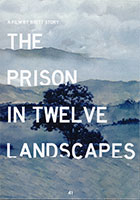
The Prison in Twelve Landscapes 2016
Distributed by Grasshopper Films, 12 East 32nd St., 4th Floor, New York, NY 10016
Produced by Brett Story with support of CINEREACH and VITAL PROJECTS FUND
Directed by Brett Story
DVD , color, 87 min.
Middle School - General Adult
Capital Punishment, Identity, Post-traumatic Stress Disorder
Date Entered: 01/26/2017
Reviewed by Malcolm L. Rigsby, Department of Sociology, Human Services, & Criminal Justice, Henderson State University, Arkadelphia, ArkansasStimulating to the senses… The Prison in Twelve Landscapes calls for humanity and social justice.
~ Malcolm L. Rigsby
Director Brett Story presents a deeply moving depiction of prison. While a critical component of protecting members of each society, prison as a social institution is a powerful and covert means of silencing, shutting off and using a growing segment of American society for economic benefit. While society at large must be protected, the film calls to forefront the fact that once labeled a convict and prisoner the individual becomes a nullity that exists for the government. The individual is used and abused economically, devoid of individual worth and ability, and rather viewed as a pariah. Meanwhile, society as a system hides the unpleasant discourse and mechanics of prison in a way to make the process of this type of waste of human productivity more palatable and hidden from view. Story presents prison, especially the American prison, as a mode of incapacitation as well as a system of exclusion that enslaves the felon.
As substantiated by data, certain categories of society are more subject to this form of victimization. While the film does not seek to portray race or socioeconomic status as a persecuted status neither does it shy from the fact that in America we have the largest westernized prison population in the world, and the demographics are heavily skewed against minorities, especially African Americans.
Questions of worth, self-value and self-efficacy arise within the context of many stories and narratives that are a part of this film. While culture and media depict the felon as a lost cause, the other edge of the scenario is that society has been desensitized in regards to the unfair use and abuse of men and women who having once committed crime, even though many seek to transform their lives, regain self-pride and reenter society as productive citizens.
The Prison in Twelve Landscapes takes us on a deeply moving journey that a large and ignored segment of our society must walk. We see many contributions that those in and after prison make to our society; yet they remain ostracized. A challenge the film presents is to help restore the offender and harness their ability not as an enslaved mechanism to be used for society, but as a voluntary and freely contributing component of our society.
The film superbly provides much opportunity for those interested in assisting those who are either in prison or have once been in prison to reclaim productive lives. Individuals and groups interested in criminology, politics, sociology, psychology, or religious ministry will find this film informative, disturbing, thoughtful and motivating. Faculty, students and citizens should view this film. The film’s website provides an official trailer.
Awards
- 2016 HotDocs, Special Jury Prize
- 2016 DOXA Documentary Film Festival, Winner Best Canadian Feature